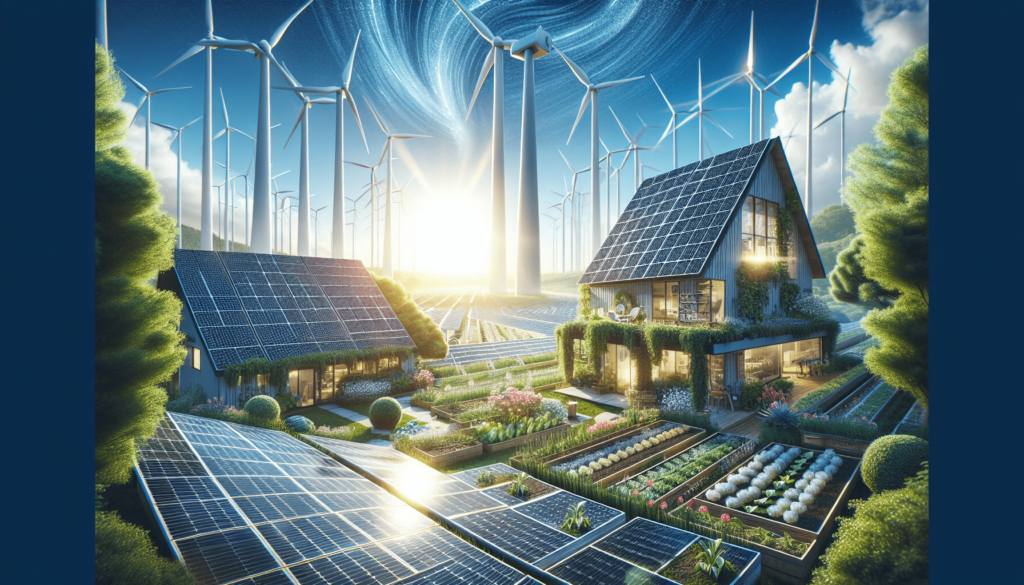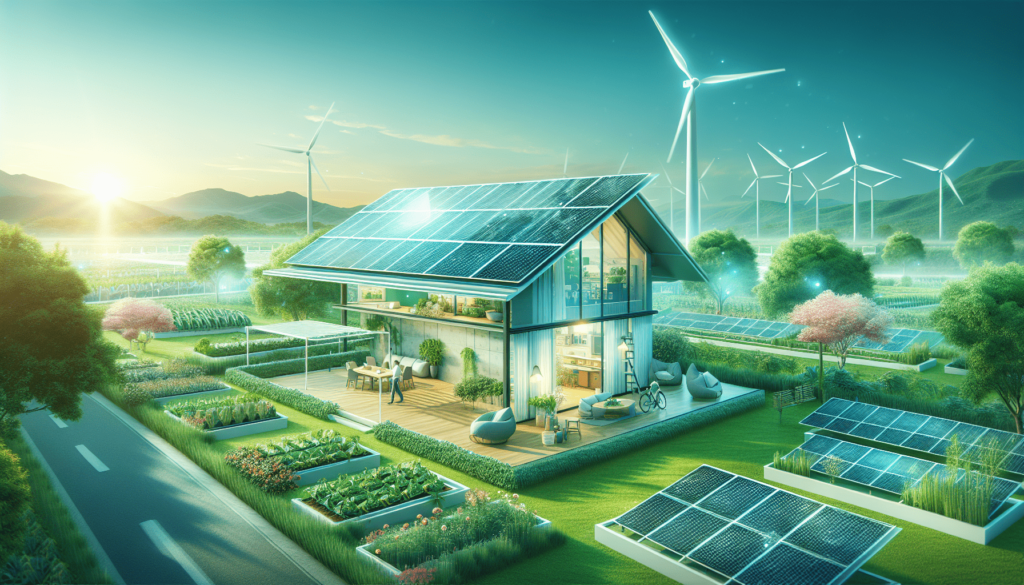
Have you ever wondered how to power your home for free? With rising energy costs and growing concerns about environmental impact, many people are searching for ways to reduce their dependence on the grid. Imagine the freedom and peace of mind knowing that your home is powered by renewable energy sources, cutting down your utility bills and contributing to a healthier planet. So, how can you achieve this? Let’s explore the options available and discover the various solutions.
Understanding Renewable Energy Sources
Before we delve into specifics, it’s essential to grasp what renewable energy sources are. These include energy harvested from natural processes that are continuously replenished. Wind, solar, and geothermal energy are some prime examples.
Solar Power
Solar power harnesses energy from the sun. It’s one of the most accessible and widely used forms of renewable energy for residential use. Solar panels convert sunlight directly into electricity, which can be used to power your home.
Types of Solar Panels
Not all solar panels are created equal; they come in several types:
| Type | Efficiency | Cost | Lifespan | Best For |
|---|---|---|---|---|
| Monocrystalline | High | Expensive | 25-30 years | Homes with limited roof space requiring high efficiency |
| Polycrystalline | Medium | Moderate | 20-25 years | Budget-friendly projects with ample roof space |
| Thin-Film | Varies | Least expensive | 10-20 years | Large spaces where weight is a concern |
Understanding the differences can help you decide which type of solar panel suits your needs best.
Solar Installation Process
The installation of solar panels involves several steps:
- Site Assessment: A professional will evaluate your home’s solar potential based on its location and structure.
- System Design: Customized to meet your energy needs and roof design.
- Permits and Approvals: Necessary for complying with local regulations.
- Installation: Mounting the panels and connecting the system.
- Inspection and Activation: Final checks to ensure the system is operational and safe.
Wind Power
Wind power generates electricity by using wind turbines. It can be an effective solution depending on your location, particularly if you live in a windy area.
Types of Wind Turbines
Wind turbines also come in different types:
| Type | Best For | Efficiency | Cost |
|---|---|---|---|
| Horizontal Axis | Open fields, rural areas | High | Expensive |
| Vertical Axis | Urban environments, rooftops | Lower | More affordable |
Wind Installation Process
Setting up wind power involves:
- Site Assessment: Evaluating wind potential.
- Selecting Turbine Type: Based on your site and needs.
- Permits and Approvals: Complying with local laws.
- Installation: Positioning and securing the turbine.
- Grid Connection and Activation: Ensuring the system integrates with your home’s electrical system.
Geothermal Energy
Geothermal energy leverages the Earth’s internal heat. This type of energy is excellent for both heating and cooling your home.
How Geothermal Systems Work
Geothermal systems comprise:
- Ground Loop: Pipelines buried in the ground to absorb heat.
- Heat Pump: Transfers the absorbed heat into your home.
- Distribution System: Delivers heating or cooling via ducts.
Installation
Installing a geothermal system requires a specific process:
- Site Survey: Assessing ground conditions.
- Loop Installation: Drilling and laying ground loops.
- Connecting Heat Pump: Integrating the heat pump with the loop.
- System Activation: Testing and commissioning the system.
Financing and Incentives
Besides the technical aspects, financing your renewable energy project is crucial. Fortunately, various incentives and rebates make it more affordable.
Government Incentives and Rebates
Governments worldwide offer numerous incentives for renewable energy installations. These can be:
- Tax Credits: Reductions in the amount of tax you owe.
- Rebates: Partial refunds available post-purchase.
- Grants and Loans: Financial aid to cover upfront costs.
Net Metering
Net metering allows you to earn credits for excess energy generated by your renewable system. This can offset future electrical use when your system isn’t producing as much, like during the night or cloudy days.

Energy Storage Solutions
To ensure a steady supply of power, energy storage solutions like batteries are critical. They store excess energy produced during peak times for use during non-productive periods.
Types of Batteries
Batteries come in various types, each with their own pros and cons:
| Battery Type | Energy Density | Lifespan | Cost |
|---|---|---|---|
| Lead-Acid | Low | 5-10 years | Most affordable |
| Lithium-Ion | High | 10-15 years | More expensive but longer-lasting |
| Nickel-Cadmium | Medium | 15-20 years | Less common due to environmental concerns |
Combining Systems for Maximum Efficiency
Often, the best solution isn’t using a single renewable energy source but combining them for optimal efficiency and reliability.
Hybrid Systems
A hybrid system might involve combining solar and wind, solar and geothermal, or even all three. This approach ensures that when one source isn’t producing, the others can compensate.
Efficient Integration
For a seamlessly integrated hybrid system:
- System Design: Customized to harness the best of each energy source.
- Component Compatibility: Ensuring all components work together efficiently.
- Smart Grid Integration: Using technology to optimize energy use.

Maintenance and Monitoring
Regular maintenance and effective monitoring systems can ensure that your renewable energy solutions continue to operate efficiently and last longer.
Routine Maintenance
Key maintenance activities:
- Inspect Panels and Turbines: Ensure they are clean and free from debris.
- Check Connections: Secure and replace any worn-out wires or fittings.
- System Performance Monitoring: Use of apps and devices to track energy production and consumption.
Professional Services
You might need professional services periodically to carry out comprehensive inspections and repairs, ensuring everything runs smoothly.
Case Studies: Real-World Examples
Sometimes, seeing is believing. Let’s look at a few real-world examples of homes powered entirely by renewable energy sources.
Example 1: The Solar Oasis
- Location: Arizona, USA
- Energy Sources: Monocrystalline Solar Panels
- System Highlights: Utilized a large roof space, net-metering for excess energy
- Outcome: Reduced electricity bills by 90%, reached energy independence.
Example 2: The Windy Retreat
- Location: Scotland
- Energy Sources: Horizontal Axis Wind Turbine
- System Highlights: High wind speeds, battery backup storage
- Outcome: Covered electricity needs year-round, excess energy sold back to the grid.
Example 3: The Geothermal Haven
- Location: Ontario, Canada
- Energy Sources: Ground Source Heat Pump
- System Highlights: Maintained home comfort in extreme climates.
- Outcome: Savings on heating/cooling bills, significantly reduced carbon footprint.
Conclusion
Renewable energy sources offer a viable way to power your home for free, save money, and contribute to a sustainable future. By tapping into solar, wind, or geothermal energy – or even a combination of these, you can enjoy the benefits of a self-sufficient energy system. With various incentives and advancements in technology, achieving energy independence has never been more accessible. So, why not take that step and explore the benefits of renewable energy solutions today?
